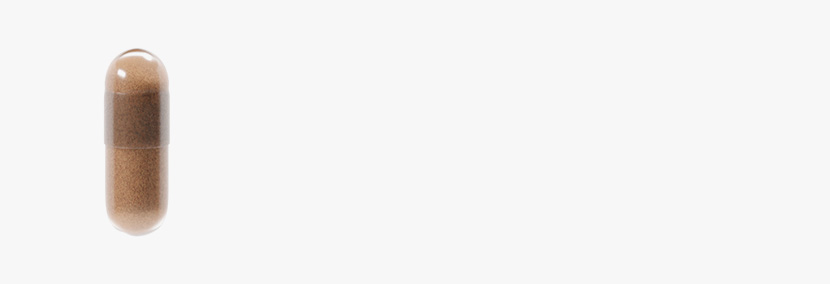Saxenda
Foods to Avoid While on Saxenda
Jun 3, 2025
A balanced diet is essential for overall health, as it provides the necessary nutrients to support bodily functions and prevent chronic diseases. Experts believe that diets rich in whole grains, lean proteins, and vegetables are associated with a lower risk of obesity, diabetes, and cardiovascular disease. Conversely, excessive consumption of processed foods, saturated fats, and refined sugars can contribute to metabolic disorders and weight gain.
Saxenda, a GLP-1 receptor agonist, is a prescription medication designed to aid weight loss by reducing appetite and slowing digestion. While effective, its impact can be influenced by dietary choices. Certain foods may exacerbate side effects or hinder weight loss progress. Understanding which foods to avoid can help users maximize the benefits of Saxenda.
In this article, we will explore the dietary considerations for Saxenda users, including foods to avoid, their effects, and best practices for maintaining a balanced diet.
Key Takeaways
- Saxenda works by regulating appetite and metabolism, supporting sustainable weight loss when used in conjunction with a balanced diet and regular exercise.
- High-fat, sugary, spicy, and acidic foods can hinder Saxenda’s effectiveness and worsen side effects like nausea, vomiting, and gastrointestinal discomfort.
- Alcohol consumption can interfere with Saxenda by increasing the risk of low blood sugar (hypoglycemia) and reducing its effectiveness, making moderation necessary.
- Opting for healthier alternatives, such as whole fruits, natural sweeteners, and milder seasonings, can help maintain balanced blood sugar levels and support weight management.
- Consulting with a healthcare provider or nutritionist is essential for developing a personalized eating plan to enhance Saxenda’s effectiveness and ensure long-term success in weight management.
About: Trusted by over 2,000+ global clients since 2014, Maylips has become a leading supplier of cosmetic, skincare, and orthopedic products for medical and aesthetic professionals. Maylips offers a wide range of authentic brand-name products at competitive wholesale prices, sourced from around the world. If you’re looking to buy Saxenda online, contact our sales team for guidance.
High-Fat and Fried Foods
High-fat and fried foods can exacerbate nausea and digestive discomfort for users of Liraglutide, Saxenda’s generic name and active ingredient. These foods slow down digestion, making it harder for the body to process nutrients efficiently. Reducing fat intake can help minimize side effects and improve overall weight management. Some foods to avoid include:


- Fried Chicken and French Fries: These are high in unhealthy fats and can lead to bloating and sluggish digestion.
- Fatty Cuts of Meat (e.g., pork belly, ribeye steak): Increases calorie intake and can significantly slow down digestion.
- Butter-heavy Dishes (e.g., creamy sauces, pastries): These foods add unnecessary fats that can interfere with Saxenda’s effectiveness in promoting weight loss.
- Fast Food Items (e.g., burgers, fried snacks): Typically high in grease and sodium, which can hinder digestion and weight loss efforts.
Instead, opt for grilled, baked, or steamed preparations, which preserve flavor and help support weight loss while maintaining a healthier digestive process.
Sugary Foods and Beverages
Excessive sugar intake can significantly hinder weight loss progress by increasing calorie consumption and triggering frequent cravings. Since Saxenda works by regulating appetite and metabolism, consuming sugary foods may reduce its effectiveness and lead to unstable blood sugar levels. Some foods and beverages to limit include:


- Candies and Chocolates: These are high in refined sugar, which leads to increased hunger and insulin spikes.
- Pastries and Baked Goods: These often contain large amounts of sugar and unhealthy fats, both of which slow weight loss.
- Sugar-sweetened Beverages: Soda, fruit juices, and energy drinks contribute excessive empty calories that negate the benefits of Saxenda.
- Flavored Yogurts with Added Sugar: Many yogurts contain hidden sugars that can counteract Saxenda’s effects on appetite control and weight management.
Instead, opt for whole fruits and natural sweeteners like honey or stevia, which help maintain balanced blood sugar levels while supporting weight management.
Spicy and Acidic Foods
Spicy and acidic foods can irritate the gastrointestinal tract, leading to heartburn, nausea, and discomfort for Saxenda users. Certain ingredients in spicy and acidic foods may trigger digestive sensitivity, making it important to monitor food choices while using this medication. Foods to limit or avoid include:


- Chili Peppers and Hot Sauces: These can increase stomach acid production, causing irritation and discomfort.
- Citrus Fruits (e.g., oranges, lemons, grapefruits): High acidity can lead to acid reflux and bloating.
- Tomato-based Dishes (e.g., pasta sauces, ketchup): Naturally acidic, these may aggravate digestive issues.
- Vinegar-heavy Foods (e.g., pickles, dressings): Excessive acidity can disrupt stomach balance, causing discomfort and irritation.
Adjusting spice intake based on individual tolerance and opting for milder seasonings can help minimize digestive distress while supporting weight management.
Alcohol Consumption
Alcohol can interfere with Saxenda’s effectiveness and may cause adverse side effects, so moderation is key. One major concern is hypoglycemia (low blood sugar), which can occur when alcohol affects glucose regulation. Additionally, alcohol consumption can increase nausea and vomiting, making digestive discomfort worse. Risks associated with alcohol while on Saxenda include:
- Lower Blood Sugar Levels: Can result in dizziness, fatigue, and even fainting.
- Increased Nausea and Vomiting: This worsens Saxenda’s common side effects, making it harder to manage treatment.
- Reduced Saxenda Effectiveness: Alcohol can slow metabolism and may counteract weight loss goals, reducing the overall success of Saxenda therapy.
To maintain weight loss progress, individuals should limit alcohol intake or choose low-sugar alternatives like light beer or dry wine. It’s advisable to consult with a healthcare provider to help determine safe consumption levels while using Saxenda.
Conclusion
Tailoring your dietary choices while on Saxenda is essential to reduce side effects and optimize weight loss goals. Avoiding high-fat, sugary, spicy, and acidic foods, as well as moderating alcohol intake, helps ensure optimal results.
Collaborating with a healthcare provider or nutritionist can help develop sustainable eating habits that support long-term health and weight management success.
FAQs
1. How does Saxenda help with weight loss?
Saxenda works by reducing appetite and slowing digestion, helping users consume fewer calories.
2. Can I drink coffee while on Saxenda?
Yes, but limit high-sugar coffee drinks, as excess sugar can counteract weight loss efforts.
3. What is the best time to take Saxenda?
Saxenda can be taken at any time; however, consistency in timing helps maintain its effectiveness.
4. Does Saxenda cause nausea?
Some users experience mild nausea, which can be managed by eating smaller meals and avoiding trigger foods.
5. Can I exercise while using Saxenda?
Yes, regular physical activity enhances the weight loss benefits of Saxenda.
6. How long does Saxenda take to show results?
Weight loss effects typically become noticeable within a few weeks, depending on diet and lifestyle.
7. Who should avoid Saxenda?
Individuals with thyroid cancer, pancreatitis, or severe gastrointestinal conditions should consult a doctor before use.
Talk with our sales representative.
Book a Meeting
References
Enkhmaa B, Surampudi P, Anuurad E, Berglund L. Lifestyle changes: effect of diet, exercise, functional food, and obesity treatment on lipids and lipoproteins. Endotext – NCBI Bookshelf. Published September 11, 2018. https://www.ncbi.nlm.nih.gov/books/NBK326737/
What foods should I avoid while on Saxenda? Drugs.com. https://www.drugs.com/medical-answers/foods-avoid-saxenda-3569176/
World Health Organization: WHO. Healthy diet. Published April 29, 2020. https://www.who.int/news-room/fact-sheets/detail/healthy-diet





